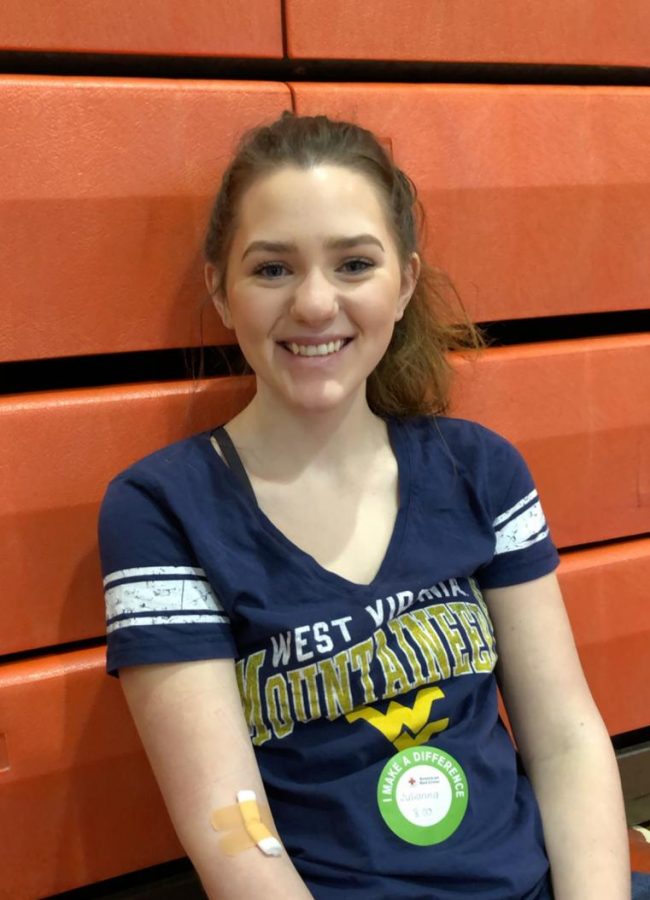What is it Like to be a First Time Blood Donor?
Everyone has their reasons for donating blood, but one thing is always the same- these donors save the lives of 4.5 million lives in the United States annually, according to www.bnl.gov. One blood donation, which is averagely one pint of blood, can save the lives of up to three people. Out of every ten people that enter a hospital for any reason, one of them needs blood, so it is clear that blood donation is a life saving act.
“I donated blood for the first time this year at the National Honor Society blood drive,” said Jefferson-Morgan student Julie Kline. “I pretty much chose to donate because it’s a great opportunity to help those in need, and I wanted to do my part.”
Before donation, some people may feel nervous. Some do not like needles or blood, while some are afraid of others things like passing out. It is important to always drink plenty of water before donation and to ensure one has eaten that day. At the school blood drive, everyone is required to drink a bottle of water before donating, and donors are offered juice and snacks after donation.
“I was not really that nervous to donate,” said Kline. “I’m not afraid of needles, and I even felt pretty good after donating.”
Before anyone is allowed to donate, they are given a verbal questionnaire to ensure that they are at standard to donate. Some of the questions include the last time they donated and if they have gotten any recent tattoos. There is also a blood scan beforehand to see if the blood is good to use. Not only this, but after the blood is drawn is taken to hospitals, it is tested again at a higher level to endure it is definitely safe for use.
“It turns out my blood could not be used because my iron levels were too low,” Kline said. “It sucks that I went through the process without getting any results, but at least I know that they are checking to make sure that the blood they use is safe.”
The point of having blood drives conducted at the school for students is to encourage them to fulfill a life of blood donations. If one donates once in their youth, they are more likely to continue to donate than someone who donates for the first time in their adult life. A great amount of students donate blood at these drives, and most of them feel that they will continue to do so.
“I do plan to donate my blood again,” stated Kline. “That is, if my iron levels ever rise.”
Blood donations are always going to be necessary due to its high demand. It is important that anyone who can donate does so, because it will definitely save a life.

Makenzie Wright is a senior and a second year Journalism student, serving as an editor-in-chief.
Makenzie is a participant in both volleyball and basketball....



